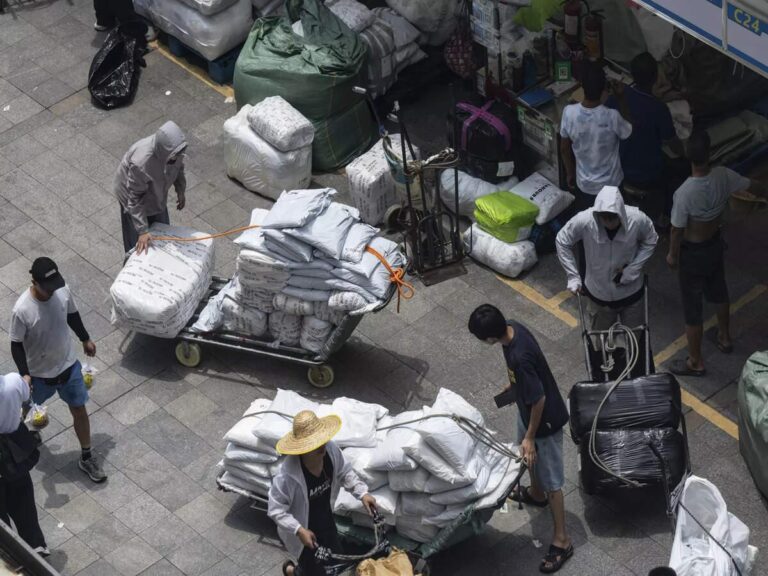As tariffs imposed under the Trump administration continue to escalate, American businesses across multiple sectors are increasingly finding themselves in what industry leaders describe as “survival mode.” The latest round of tariffs, aimed at reshaping global trade dynamics, has led to mounting costs for manufacturers, retailers, and exporters, forcing companies to rethink supply chains and pricing strategies. This growing pressure highlights the broader economic challenges faced by enterprises navigating an uncertain trade environment, raising concerns about the long-term impact on the U.S. economy.
American Manufacturers Face Rising Costs Amid Escalating Tariff Pressures
American manufacturers are grappling with a complex web of escalating expenses as tariffs imposed during the Trump administration continue to ripple through supply chains. Many businesses have reported notable increases in raw material costs,which are forcing them to make tough decisions: absorb the costs,pass them on to consumers,or reduce their workforce to stay afloat. As these tariffs apply to a range of goods—from steel and aluminum to electronics and textiles—companies across industries are experiencing tightening margins and unpredictability in budgeting.
- Input costs up by an average of 15% since 2018 in manufacturing sectors.
- Supply chain delays causing disruption in production schedules.
- Shift in sourcing strategies toward domestic or option suppliers to mitigate tariff impact.
| Sector | Tariff Impact | Cost Increase (%) | Response Strategy |
|---|---|---|---|
| Steel & Aluminum | 25% on imports | 18% | Increase domestic sourcing |
| Electronics | 10%-25% on components | 12% | Supplier diversification |
| Textiles | 10% tariffs | 15% | Negotiating long-term contracts |
Industry leaders emphasize that the unpredictability surrounding tariff policies has led many manufacturers to adopt a “survival mode” mentality. Investment in innovation and expansion projects is being postponed, and companies are prioritizing financial resilience over growth. The prolonged uncertainty not only stymies domestic competitiveness but also affects relationships with global partners, as firms tread carefully to avoid further disruptions. Economists warn that without clear direction on trade policy, American manufacturing could face lasting setbacks in the global marketplace.
Supply Chain Disruptions Challenge Retailers and Small Businesses Nationwide
Retailers and small businesses across the nation are reeling under the pressure of escalating costs and delayed shipments, a direct outcome of the ongoing tariff policies. Many merchants report inventory shortages and rising wholesale prices that force them to either increase retail prices or reduce their product offerings,impacting consumer choice and satisfaction. Industry experts warn that these disruptions could slow economic recovery as businesses battle tight margins.
Key challenges faced by small businesses include:
- Prolonged shipping delays from international suppliers
- Increased import duties on essential raw materials
- Reduced cash flow due to inventory bottlenecks
- Pressure to raise prices amid inflation concerns
| Impact | Percentage of Respondents | Effect |
|---|---|---|
| Delayed Shipments | 68% | Inventory shortages, lost sales |
| Increased Tariffs | 54% | Higher product costs, squeezed margins |
| Price Hikes | 47% | Reduced consumer demand |
Government Response and Industry Calls for Tariff Relief Intensify
Amid escalating economic pressures, federal lawmakers are facing mounting pressure from both industry leaders and local businesses to reconsider the ongoing tariffs. Several congressional members have urged the administration to introduce relief measures, highlighting the risk of significant job losses and rising consumer prices.The bipartisan consensus acknowledges that sustaining the current tariff levels threatens the stability of key sectors including manufacturing, agriculture, and retail.
- Manufacturers emphasize increased production costs and disrupted supply chains.
- Agricultural sectors report diminished export opportunities and financial uncertainty.
- Small businesses call for more flexible trade policies to maintain competitiveness.
| Sector | Impact | Relief Requested |
|---|---|---|
| Manufacturing | Supply chain delays, higher costs | Tariff exemptions, subsidy programs |
| Agriculture | Export drops, price instability | Trade negotiations, financial aid |
| Retail | Rising MSRP, inventory shortages | Duties suspension, tariff rollbacks |
Strategies for Businesses Navigating the Uncertain Trade Environment
With tariffs climbing, many American companies have had to recalibrate their supply chains swiftly to minimize cost impacts. A common approach involves diversifying sourcing locations, shifting procurement away from high-tariff countries to more politically stable regions. This tactical relocation often includes ramping up partnerships with suppliers in Latin America and Southeast Asia to maintain competitive pricing without compromising quality.
Additionally, businesses are aggressively investing in technology to boost operational resilience. Automation and advanced analytics not only help optimize inventory levels amid volatility but also enhance forecasting accuracy. Below is a snapshot of key strategic pivots currently employed by firms contending with tariff uncertainties:
| Strategy | Purpose | Impact |
|---|---|---|
| Diversified Sourcing | Reduce tariff exposure | Cost containment, supply stability |
| Inventory Optimization | Buffer against delays | Improved customer satisfaction |
| Technology Investments | Enhance forecasting and automation | Operational efficiency |
| Pricing Adjustments | Pass costs strategically | Maintain margins |
Insights and Conclusions
As American businesses continue to grapple with escalating costs and uncertain supply chains, the impact of Trump-era tariffs remains a significant hurdle. Industry leaders warn that without relief or policy shifts,many firms may face prolonged financial strain,perhaps reshaping the U.S. economic landscape. The coming months will be critical in determining whether businesses can adapt or if sustained tariffs will force deeper adjustments across sectors.




